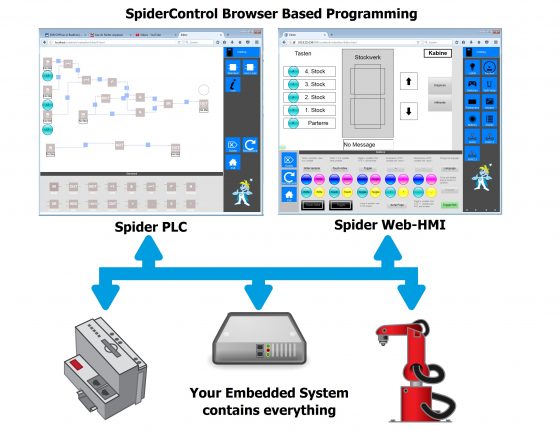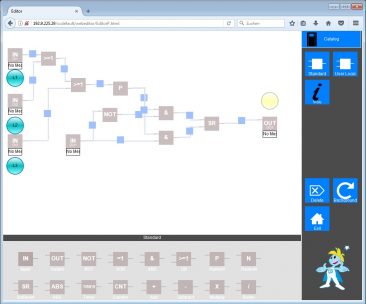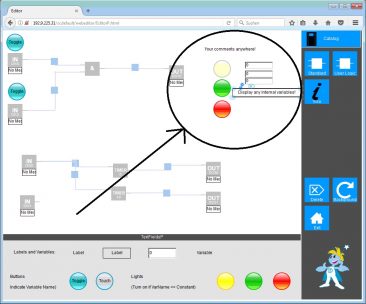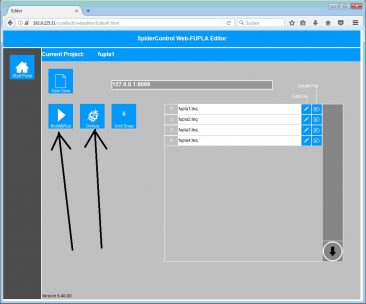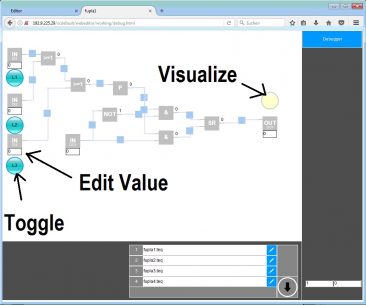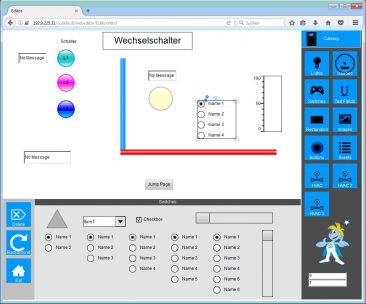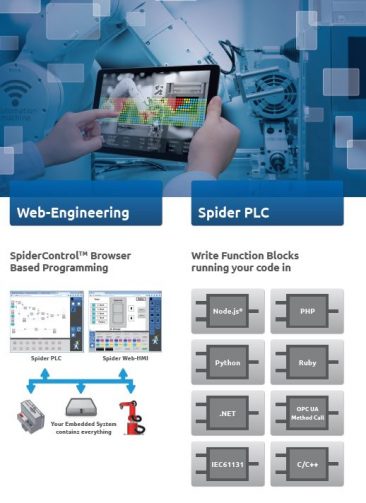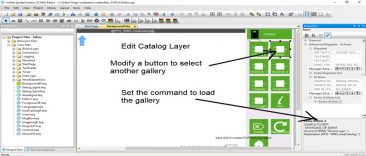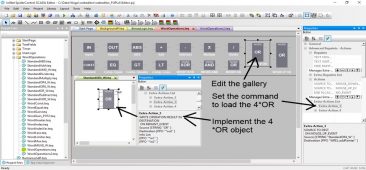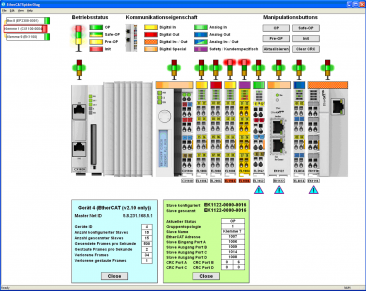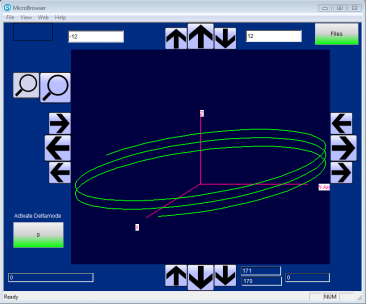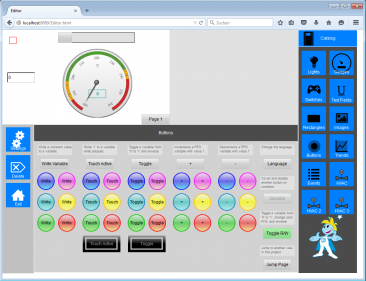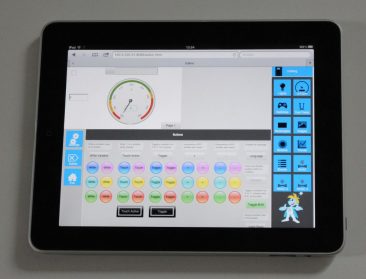Spider PLC Spider PLC on MicroController Spider PLC inside SCADA Spider Editor-Editor Spider Platforms Spider Web-Kit Spider Cloud-Portal
With IoT, there will be 10 times as many devices as today, but not 10 times as many programmers!
The programming has to be simpler and more automatic!
Do you want to program and visualize quick and easy?
Then just use the different building blocks of SpiderControlTM .
Automation components should be programmed, configured and operated exclusively via a normal web browser. In the age of IoT and Industry 4.0, PC-based tools are no longer up-to-date. iniNet Solutions provides the modular system to equip your product with comprehensive web functions.
So far, users have designed, programmed and visualized with a PC tool and copied the output to an embedded system with a Web-Server. Now all this works directly over the browser! This means that no PC software is necessary for the development because the entire software for the design of the user interfaces is provided by the embedded Web-Server.
Spider PLC
Simple PLC functions!
With SpiderControlTM Spider PLC, embedded devices can be programmed directly using a standard HTML5 browser. In the age of the IoT it is necessary that intelligent devices can be programmed directly in the field. But it must be as simple as possible! The programming via the integrated Web-Server offers enormous advantages:
- No software installation on the PC
- Programming with smartphone and tablet
- No download, no wrong software version
- Seamless integration with the cloud (optionally, only if the customer wants it).
Spider PLC Programming: Select standard logic function blocks from galleries and connect them by drag & drop:
Visu elements can be integrated directly into the Spider PLC for debugging:
Compile / Run / Debug: A single button!
Debugger: More than just an insight into the process:
Spider PLC is a kit:
You want to have your own Spider Web-HMI Editor?
The functions and the user interface of the programming tool can be drawn and implemented using the SpiderControlTM PLC Editor (PC-Tool). Simple logic functions are programmed directly with the SpiderControlTM logic actions. For complex logic, external functions can be called from a block. You can integrate your own algorithms in C / C ++ or in IEC61131.
Take advantage of the easy-to-use HMI programming via browser!
Combine with web visualization: The Spider Web-HMI Editor is integrated and allows parallel design of attractive user interfaces.
Runtime requirements:
The entire functionality is integrated into an embedded web server. This is available on all common operating systems:
- Windows 7/8/10
- Windows CE (WEC)
- Linux
- Raspian
- Android
Due to its a portable and modular design, Spider PLC is also available on microcontrollers and RTOS.
Click here for the video: Spider PLC programming in use.
Click here for the video: Spider PLC on Raspberry.
Click here for the product flyer Spider PLC.
Test Spider PLC live in the Azure Cloud!
For more information, click here.
Spider PLC on a MicroController
Graphical programming and online debugging via USB / Serial
Do you need a very simple programming possibility on a single-chip MicroController – from 128 kB Flash, 80 kB RAM?
The networked architecture of Spider PLC makes it possible that only the runtime for executing the code is compiled on the MicroController, while the server with the programming software runs on a remote computer. This can be either a normal PC or a specific embedded system that is used as a programming device. With this construction kit, you can create your own programming tool with online debugger in no effort at all!
The concept of the Spider PLC consists of various components of a modular system, which can be used in various different constellations.
Please find out more in our Application Note.
Click here to download.
Click here for the video.
Spider PLC inside SCADA
The Future of SCADA!
The combination of the very powerful SpiderControlTM SCADA server with SpiderPLC opens up completely new possibilities: Calling of high-level language functions from NodeJS, NodeRED, Python, PHP or .Net from function blocks, which get their variables directly from the SCADA server and can write back the results to it. Edge Computing, IoT and I4.0 will be easy.
FBD programming in the browser allows for example:
- Simple logic functions that are executed in SpiderRT
- Customer-defined function modules can call functions from external runtimes
- Use JS to read a weather service
- Use Python to calculate an FFT
- Use NodeRED to invoke MQTT
- Use PHP to save in a SQL database
Do you have any more ideas? Sure you do!
You can use this extensive functionality not only under Windows, but also on embedded platforms like RaspberryPI, Linux, Android, in VM’s and in the Cloud.
Join us on the future of SCADA and HMI.
The following examples show how quickly and easily automation can be connected to the future:
Calling Java Script functions from NodeJS
This new video shows how to add your own Java Script code and then connect it to higher-level systems (cloud, IT, DB, etc.).
This is possible because SpiderPLC can call NodeJS Java script functions via function blocks!
More in our new video.
Calling Python functions
This video shows how the SpiderControlTM SCADA server gets the data from a PLC, processes it with a Python function and then transfers it back to the S7-1200 controller. Python provides the ideal foundation for edge computing with rich compute capabilities.
More in our new video.
Read from the 1st PLC, write in the 2nd
This video shows how the SCADA integrated SpiderPLC can read from the first PLC and write to the second PLC. A simple example of how fast a FBD control function can be implemented in SCADA.
Programming is done via the browser interface, simple and user-friendly!
More in our new video.
Beckhoff PLC writes to NodeRED and MQTT using SpiderPLC / SCADA
This video shows how to install SpiderPLC / SCADA, NodeJS, NodeRED and Mosquitto MQTT Broker on a Beckhoff PLC and how to design a simple functional block program with SpiderPLC to publish variables to MQTT.
More in our new video.
Spider Editor-Editor
Draw your own programming tool!
Benefit from:
- your own design, UI, layout
- your functions, function blocks and HMI objects
- adapted to your task
- each of your products gets the right programming tool, etc.
The trick:
SpiderControlTM PC-HMI Editor is used to custmized the Spider PLC Web-Editor.
Application examples:
- Energy management application example
- Energy management video
- ETS KNX Touch Panel-appilcation example
- Industrieal controller buliding automation application example
- Small controller wit LCD application example
- Lecture IoT-Congress in Munich
Firmware developers design their own tool with the PC HMI Editor.
And define the objects and functions.
Spider Platforms
For many platforms available!
SpiderPLC is integrated in the SpiderControlTM Web or SCADA server, which has been ported on many platforms.
Windows 7/8/10, WinCE, WEC7, Linux, Raspberry Pi, Android
Programming of Functional Bloch Description (FBD) and simple HMI directly via the browser.
Variants:
- Direct connection of the SpiderPLC to local I/Os
- Connection of the SpiderPLC to soft PLCs of CODESYS or Logi.cals, I/Os can be addressed via soft
- PLCsConnection of SpiderPLC to external PLC via SCADA server and driver
| System | Lokale I/Os | Logi.cals | CODESYS V3.x | SCADA |
| Windows PC | x | |||
| Pixtend | x | x | x | |
| Phytec Regor | x | x | x | x |
| Kunbus RevPI | x | x | ||
| INSYS Switch | x | |||
| WAGO PFC100 | x | x | ||
| Phoenix PLCnext | KW Soft | x | ||
| Android | x | |||
| Linux | x |
You need:
- Local I/Os or Soft-PLC: Spider PLC Web-Server (ST4) for the desired platform, from 120.- € plus VAT / piece
or
- Connection to SCADA: Spider PLC SCADA-Server (ST1) for the desired platform, from 300.- € plus VAT / piece
or
- Development of your own Spider PLC Editor: Development Kit, incl. SpiderControl PC HMI-Editor, from 5.000.- € plus VAT.
Embedded MicroController
SpiderPLC is also available on embedded controllers such as Cortex M3 / M4 ported. This allows you to integrate the SpiderPLC technology into your own product and adapt it completely to your needs.
You need:
- Development of your own Spider PLC product: Development Kit, incl. SpiderControlTM PC HMI-Editor, from 10.000.- € plus VAT.
Spider Web-Kit
Use the user-friendly browser-based programming of SpiderControlTM !
With the Spider Web-Kit, you can replace your PC application with a browser-based application. So far, an automation equipment manufacturer had to develop a PC application for configuration and commissioning. This PC application would then be deployed together with the embedded systems.
The Spider Web-Kit allows for fully browser-based applications instead. Up to know, browser interfaces on embedded systems have been limited to functionalities known from classic human-machine interfaces, which are characterized by typical elements such as buttons, lists or trend displays. But to catch up with the functionality of PC based configuration tools, an application needs to offer the design of dash boards, the configuration of components by drag & drop, logical connections of components as well as to display of any kind of graphical plots. These and many other features are now available in SpiderControlTM . This makes SpiderControlTM no longer just a HMI tool, but a browser-based, graphical editor.
Easy configuration of different components via drag & drop. This system solutions can be developed quickly and easily.
Displaying any plots is possible in a simple way. No matter what application it is.
Drawing own dash-boards is done in the browser-based graphical editor directly on the PC and is intuitive and easy.
The programming can also be done worldwide via tablet or smartphone. Usability is the main focus.
Click here for the product flyer Spider Web-kit.
Spider Cloud-Portal
Benefit from our secure internet connectivity!
How to connect embedded systems easily and securely with the cloud?
If the embedded systems only send cyclical data to the cloud (one-way) it is simple: there are protocols like MQTT. But if you want remote access for programming, configuration, support, operation and maintenance – it will be much more difficult. Existing solutions with VPN tunnels are complex and expensive to install and operate. When dealing with many systems this becomes a huge cost factor.
iniNet Solutions offers a technology that can be easily integrated into any system, offers high security and low costs.
SpiderControlTM VPI Internet Access is a patented concept for Internet access, which is hard to beat in terms of simplicity, in terms of installation and use. All operator pages and functions that can be used via HTTP protocol are made visible through a portal on the Internet, while maintaining high security standards.
This is especially true for embedded Web servers. OEM customers benefit primarily from a great transparency, which is represented on the Internet.
Technical information
The VPI Agent can be integrated directly to your PLC or to a device in the same network and needs only a few tens of kB of code. The embedded VPI agent is available for WinCE or embedded Linux and can also be ported to RTOS. The advantages of this concept are enormous:
- No additional hardware (such as a VPN router) is necessary, all components run on the PLC
- No public IP address required, the agent works with any Internet access infrastructure (prepaid GSM, public WLAN, …)
- No modifications to the firewall, it is sufficient to have http access to the Internet
- Most simple installation
- Full encryption possible, etc.
The agent is written in the programming language “C” and can also be operated directly on small controllers. Thus, an embedded system independently maintains a connection to the Internet, without the need for a fixed IP address (or an IP address) or another device. The problems arising with DynDns with an IP address change are also completely eliminated. The embedded agent also integrates a symmetrical encryption, which requires little performance even on small platforms. Thus, this solution provides the optimum in terms of hardware, running costs and security.
In contrast to a connection with DynDns, the PLC is not simply visible via an IP address in the Internet, but via a virtual subdirectory of the portal server. This portal server is in a secure zone, communicates externally via encrypted connections, and manages users, passwords, access rights, and profiles in a central database. If necessary, certain functions can be specifically blocked in the portal. A log file of the user interactions (audit trail function) can also be implemented centrally.
Applications
This technology can be integrated into existing systems. On the embedded system, the VPI agent is integrated (a few kbytes of code), which communicates with the VPI cloud. These connections can then be used transparently from any cloud applications of the customer.
Click here for the product flyer Spider Cloud-Portal.




